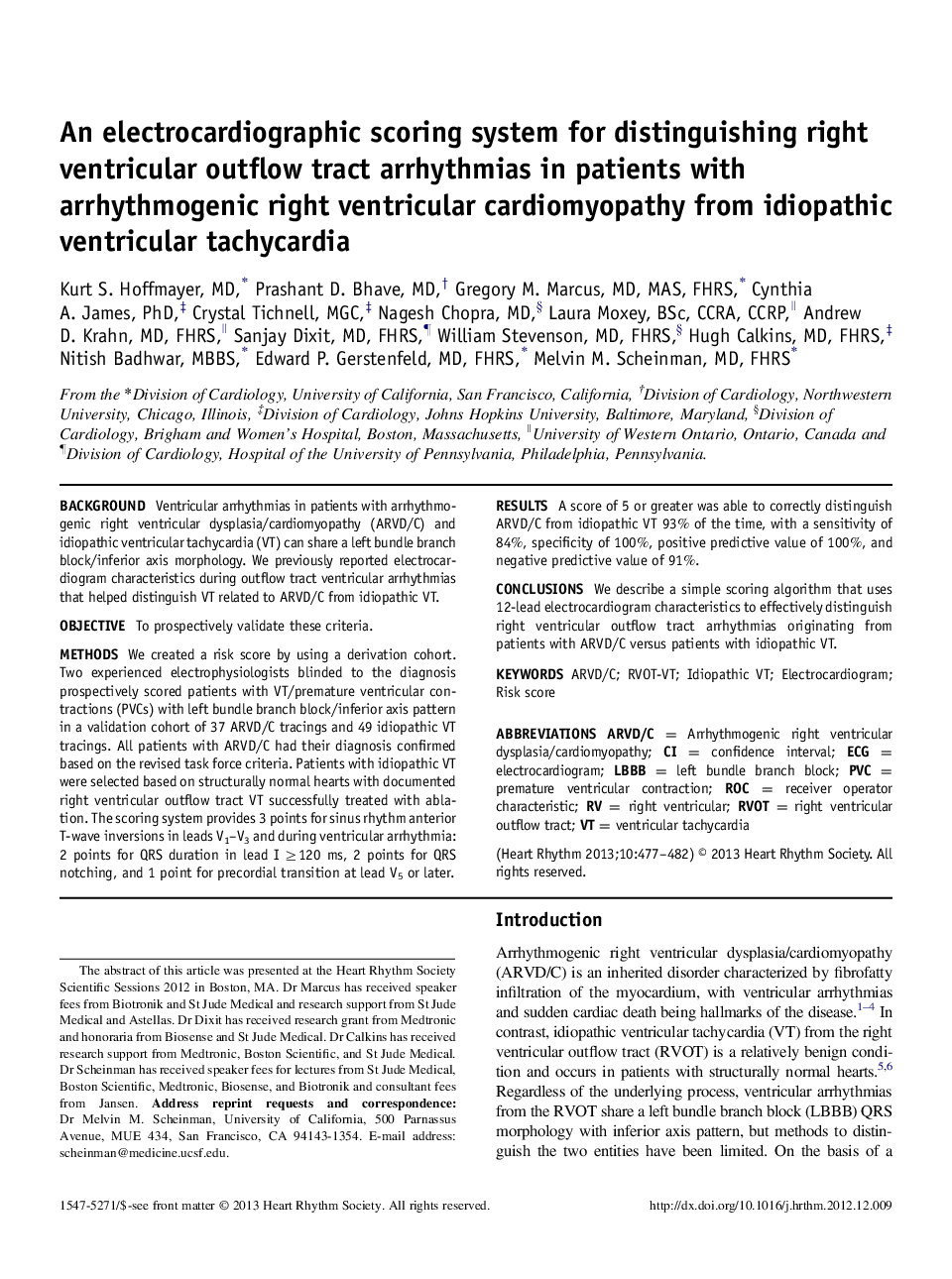| Article ID | Journal | Published Year | Pages | File Type |
|---|---|---|---|---|
| 2922407 | Heart Rhythm | 2013 | 6 Pages |
BackgroundVentricular arrhythmias in patients with arrhythmogenic right ventricular dysplasia/cardiomyopathy (ARVD/C) and idiopathic ventricular tachycardia (VT) can share a left bundle branch block/inferior axis morphology. We previously reported electrocardiogram characteristics during outflow tract ventricular arrhythmias that helped distinguish VT related to ARVD/C from idiopathic VT.ObjectiveTo prospectively validate these criteria.MethodsWe created a risk score by using a derivation cohort. Two experienced electrophysiologists blinded to the diagnosis prospectively scored patients with VT/premature ventricular contractions (PVCs) with left bundle branch block/inferior axis pattern in a validation cohort of 37 ARVD/C tracings and 49 idiopathic VT tracings. All patients with ARVD/C had their diagnosis confirmed based on the revised task force criteria. Patients with idiopathic VT were selected based on structurally normal hearts with documented right ventricular outflow tract VT successfully treated with ablation. The scoring system provides 3 points for sinus rhythm anterior T-wave inversions in leads V1–V3 and during ventricular arrhythmia: 2 points for QRS duration in lead I≥120 ms, 2 points for QRS notching, and 1 point for precordial transition at lead V5 or later.ResultsA score of 5 or greater was able to correctly distinguish ARVD/C from idiopathic VT 93% of the time, with a sensitivity of 84%, specificity of 100%, positive predictive value of 100%, and negative predictive value of 91%.ConclusionsWe describe a simple scoring algorithm that uses 12-lead electrocardiogram characteristics to effectively distinguish right ventricular outflow tract arrhythmias originating from patients with ARVD/C versus patients with idiopathic VT.
